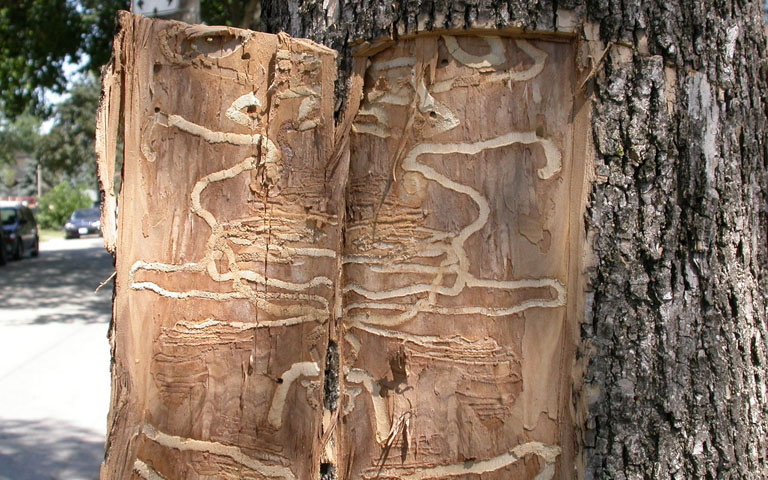
AUGUSTA, Maine – The Maine Department of Agriculture, Conservation and Forestry’s Plant Health Program and Maine Forest Service announced that Maine is taking the next step to continue regulating the movement of ash wood material.
Moving ash infested with Emerald Ash Borer can spread this invasive insect to new areas. This decision follows USDA’s Jan. 14 announcement of removing federal domestic EAB quarantine regulations. DACF continues to see opportunities to slow EAB’s spread; an estimated 90 percent of Maine’s ash trees are outside of Maine’s currently regulated areas. Ash is an important cultural resource for the Wabanaki, an important street tree, and a valuable timber species, accounting for around four percent of Maine’s hardwood forest inventory.
Maine’s proposed EAB quarantine rules would maintain the prohibition on moving potentially EAB-infested materials into Maine’s non-regulated areas from other states or Canadian provinces.
The proposed rules also include three options for expanding the areas regulated within Maine.
Maine’s amended quarantine proposal, which remains functionally the same as before federal de-regulation, includes three options for expanding the regulated area in Aroostook County. Each option addresses a specific concern. The Department needs to receive comments on all three. Any of the options could be adopted.
- Option one adds three towns to provide a buffer around the latest EAB find in Van Buren. (see maps)
- Option two includes all the towns in option one plus three towns west of Fort Kent. These towns are proposed to help facilitate firewood movement for home heating from dealers in the regulated area to St. John Plt., St. Francis and Allagash. (see maps)
- Option three includes all the towns in options one and two and adds a large block of towns south of the existing regulated area. This area is proposed to allow firewood movement from major dealers inside the current quarantine area south to Easton and west to T11 R7 WELS. This option will deregulate the flow of firewood and ash materials into the larger towns of Presque Isle, Caribou, and Fort Fairfield and to mills within the area. (see maps)
The new proposal would also ease the restrictions on the movement of hardwood and ash wood chips.
In the proposed rule, the restrictions on the movement of composted or uncomposted chips of the genus Fraxinus are removed. After years of EAB regulation across the country, the risk of chipped ash material has not appeared to be as high as previously thought. Removing this restriction should not significantly increase the potential for EAB spread.
A virtual public hearing is scheduled for March 16 from 10-11 a.m. Anyone interested in making public comment may join the meeting using MS-Teams or by telephone at 207-209-4724 — confirmation code: 390 166 010#.
Written comments may be submitted until 5 p.m. on April 2 to gary.fish@maine.gov or Gary Fish, Maine DACF – Horticulture, 28 State House Station, Augusta, ME 04333-0028.
Despite a potential expansion of the regulated area, MFS and the PHP encourage land managers to follow Best Management Practices to reduce the spread of EAB within the regulated areas.
EAB threatens all ash tree species (excluding mountain-ash) and will have significant ecological and economic impacts on the state. There are no practical means to control EAB in forested areas, though pesticide treatments can protect individual trees.
More information on EAB can be found on the Maine Department of Agriculture, Conservation and Forestry’s EAB website.
Questions about the proposed rule can be directed to gary.fish@maine.gov or by telephone at 207-287-7545.







